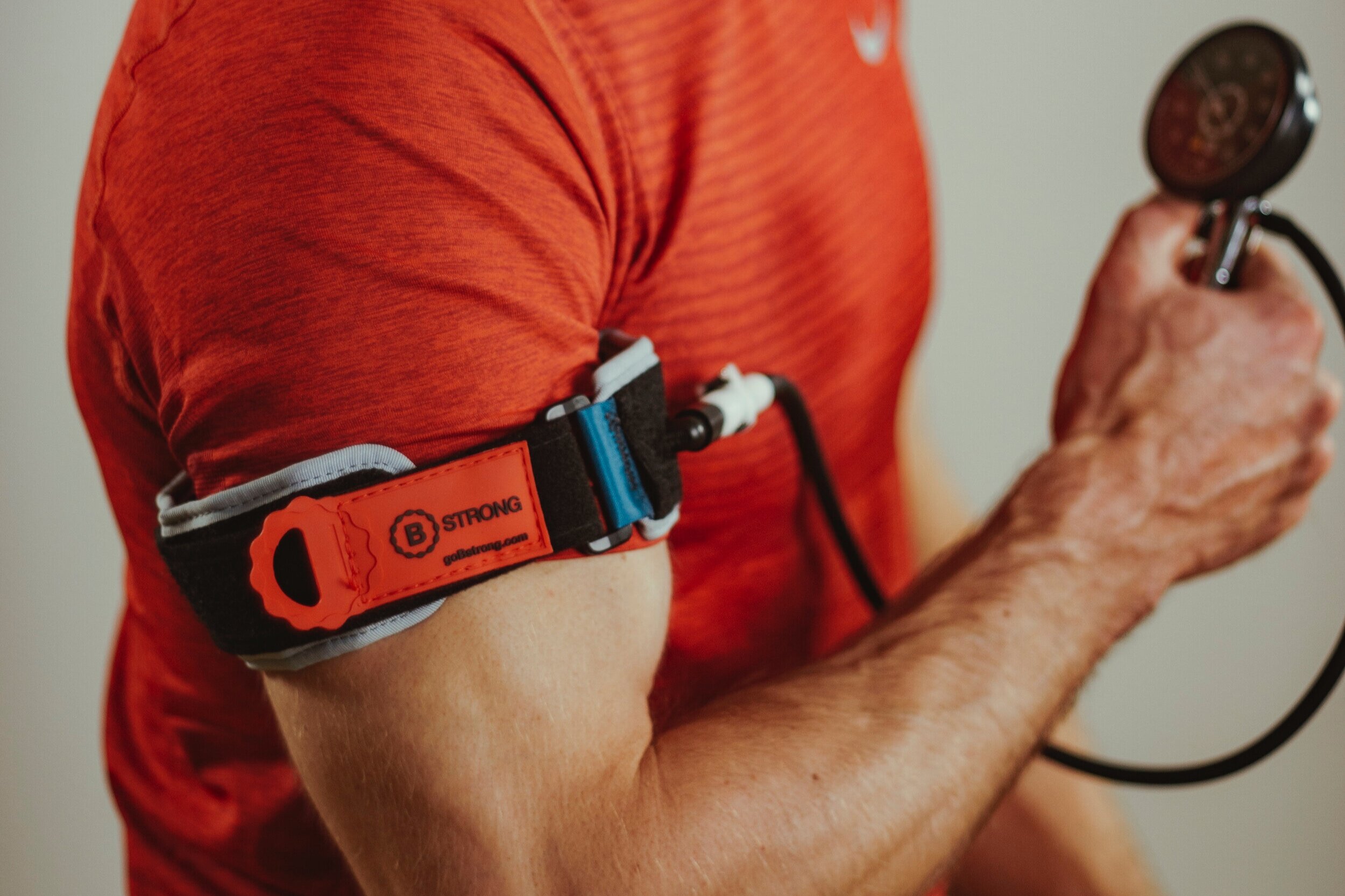““BFR can be a critical ingredient to any rehabilitative process. Whether the treatment is post operative, acute, or chronic conditions. It really tips the scales in favor of recovery.”
”
The Science behind Blood Flow Restriction (BFR)
Mechanism of BFR
Also not completely well understood
Some proposed theories/observed findings
Hypoxia response
Metabolite accumulation
Decreased catabolic response
Type II muscle fiber recruitment
Muscle Growth
Exact mechanism for muscle
growth still up for debate
Likely a combination of all observed changes
We do know what typically works
High-load resistance training - 70% 1RM2 (140lb if 200 max)
6-12 repetition range ideal7
Current Recommendations
For disuse atrophy mitigation12,13
Interestingly, low pressure works (50 mm Hg)
For those who can only tolerate walking14
Low-load resistance training15
Recommended Exercise Loads & Volume for BFR Training
A 2012 meta-analysis15 found 15-30% of 1RM to have largest effect on hypertrophy and strength
A 2012 study18 found that continuous BFR was more beneficial than intermittent
Repetitions range from 45 to 75 (30,15,15,15), although no clear protocol19
Rest periods are relatively short (30-60 s)19
Restrictive Pressure
Current research suggests 50% of arterial occlusion pressure is optimal10
Estimates can also be made with thigh circumference measurements10
For elastic wraps, a score of 7 (moderate pressure, no pain) is ideal14
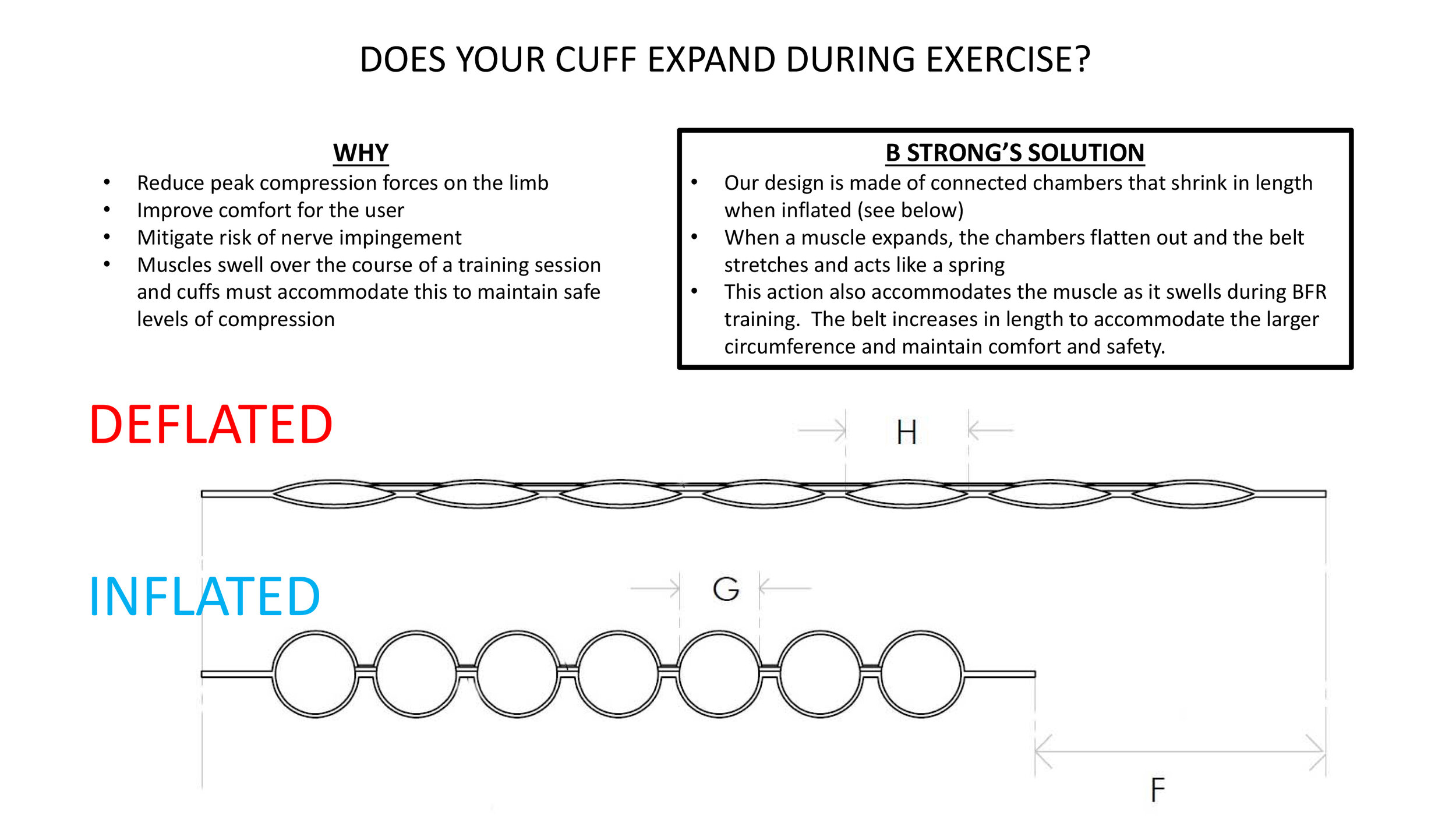
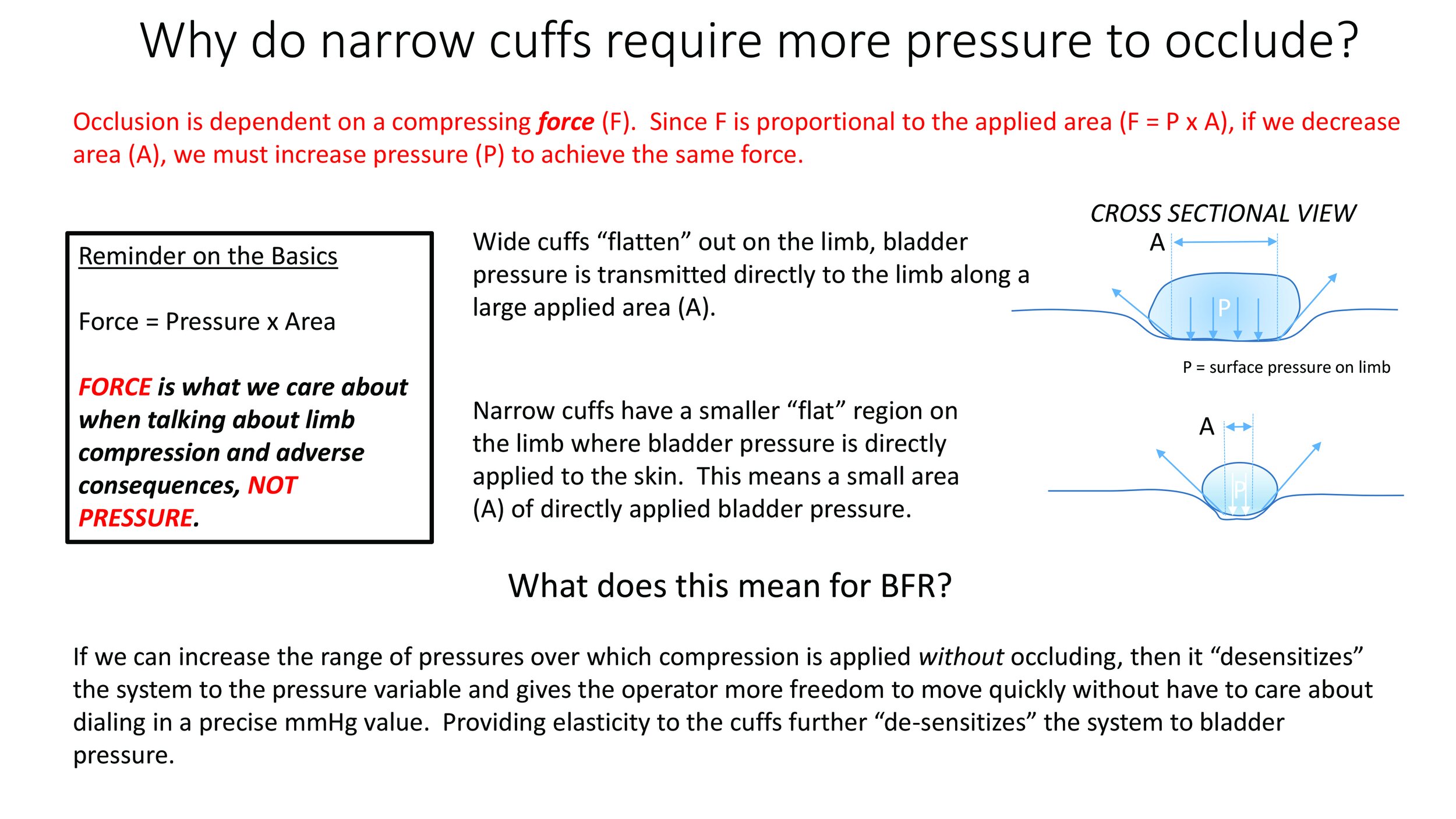
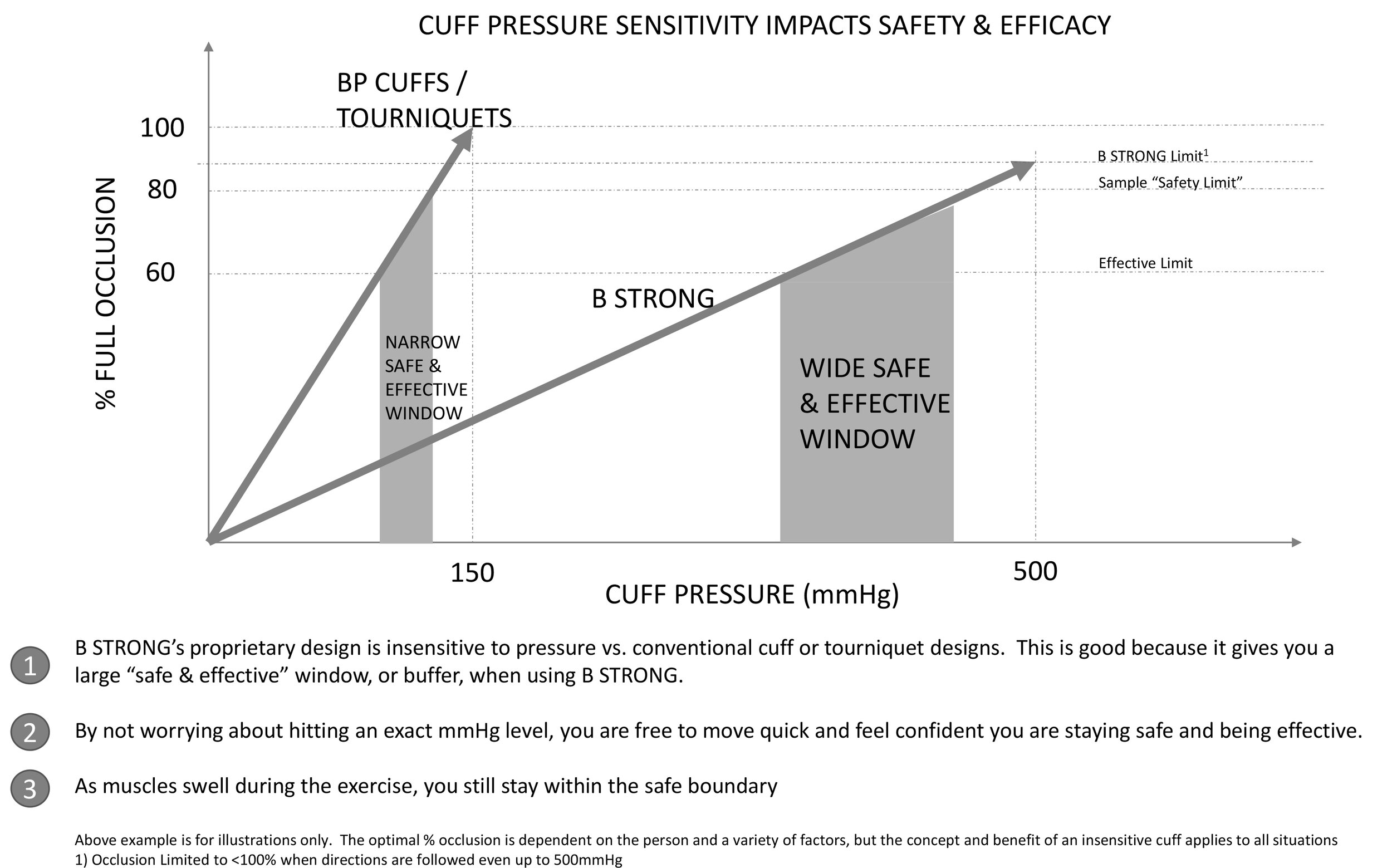
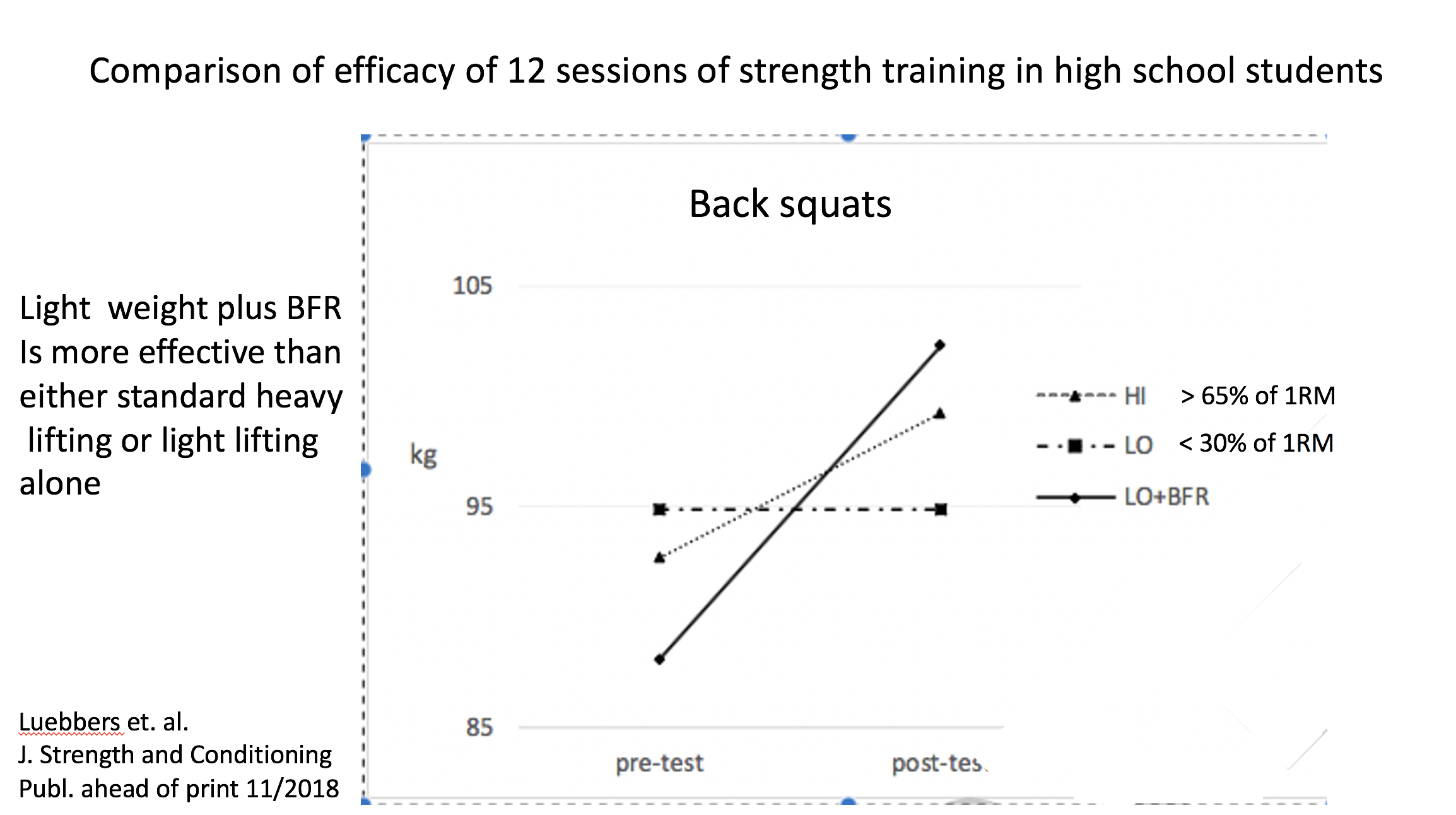
References
https://www.unm.edu/~lkravitz/Article%20folder/hypertrophy.html
American College of Sports Medicine position stand. Progression models in resistance training for healthy adults. Med Sci Sports Exerc. 2009 Mar;41(3):687-708.
West DW, Phillips SM. Anabolic processes in human skeletal muscle: restoring the identities of growth hormone and testosterone. Phys Sportsmed. 2010 Oct;38(3):97-104. doi: 10.3810/psm.2010.10.1814
Cook, S.B., B.C. Clark, and L.L. Ploutz-Snyder. Effects of Exercise Load and Blood-Flow Restriction on Skeletal Muscle Function. Med. Sci. Sports Exerc., Vol. 39, No. 10, pp. 1708–1713, 2007.
Scott BR, Slattery KM, Sculley DV, et al. Hypoxia and resistance exercise: a comparison of localized and systemic methods. Sports Med. 2014;44(8):1037–54.
Laurentino GC, Ugrinowitsch C, Roschel H, et al. Strength training with blood flow restriction diminishes myostatin gene expression. Med Sci Sports Exerc. 2012;44(3):406–12.
Schoenfeld, BJ. The mechanisms of muscle hypertrophy and their application to resistance training. J Strength Cond Res 24(10): 2857–2872, 2010
Damas F, Phillips SM, Libardi CA, et al. Resistance training-induced changes in integrated myofibrillar protein synthesis are related to hypertrophy only after attenuation of muscle damage. J Physiol. 2016;594(18):5209-22.\
Rossow LM, Fahs CA, Loenneke JP, et al. Cardiovascular and perceptual responses to blood-flow-restricted resistance exercise with differing restrictive cuffs. Clin Physiol Funct Imaging. 2012;32(5):331–7.
Loenneke JP, Kim D, Fahs CA, et al. Effects of exercise with and without different degrees of blood flow restriction on torque and muscle activation. Muscle Nerve. Epub 2014 Sep 3.
Wilson JM, Lowery RP, Joy JM, et al. Practical blood flow restriction training increases acute determinants of hypertrophy without increasing indices of muscle damage. J Strength Cond Res. 2013;27(11):3068–75.
Takarada Y, Takazawa H, Ishii N. Applications of vascular occlusion diminish disuse atrophy of knee extensor muscles. Med Sci Sports Exerc. 2000;32(12):2035–9.
Kubota A, Sakuraba K, Sawaki K, et al. Prevention of disuse muscular weakness by restriction of blood flow. Med Sci Sports Exerc. 2008;40(3):529–34.
Abe T, Sakamaki M, Fujita S, et al. Effects of low-intensity walk training with restricted leg blood flow on muscle strength and aerobic capacity in older adults. J Geriatr Phys Ther. 2010;33(1):34–40.
Loenneke JP, Wilson JM, Marin PJ, et al. Low intensity blood flow restriction training: a meta-analysis. Eur J Appl Physiol. 2012;112(5):1849–59.
Abe T, Yasuda T, Midorikawa T, et al. Skeletal muscle size and circulating IGF-1 are increased after two weeks of twice daily KAATSU resistance training. Int J KAATSU Train Res. 2005;1(1):6–12.
Schoenfeld BJ. Potential mechanisms for a role of metabolic stress in hypertrophic adaptations to resistance training. Sports Med. 2013;43(3):179–94.
Suga T, Okita K, Takada S, et al. Effect of multiple set on intramuscular metabolic stress during low-intensity resistance exercise with blood flow restriction. Eur J Appl Physiol. 2012;112(11):3915–20.
Scott, B.R., Loenneke, J.P., Slattery, K.M. et al. Exercise with Blood Flow Restriction: An Updated Evidence-Based Approach for Enhanced Muscular Development. Sports Med (2015) 45: 313. https://doi.org/10.1007/s40279-014-0288-1



